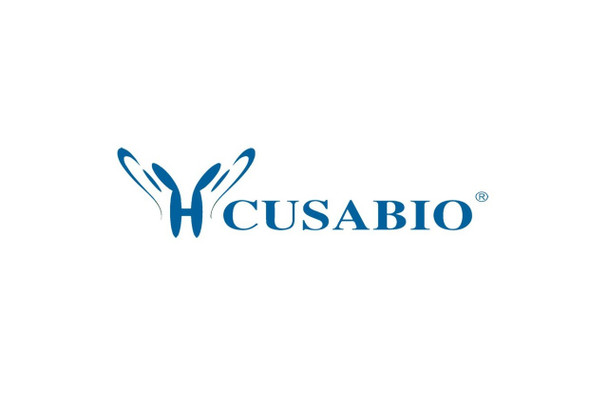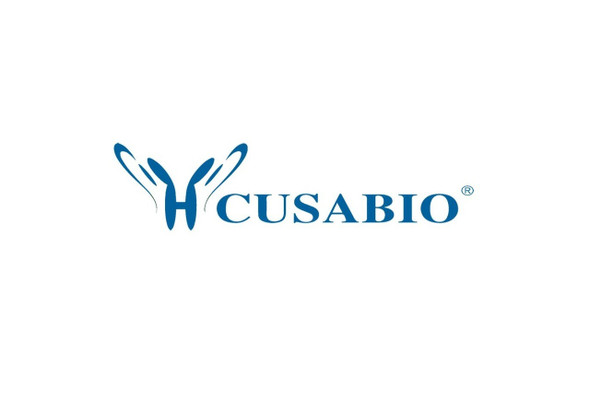Cusabio Human Recombinants
Recombinant Human Angiopoietin-related protein 2 (ANGPTL2) | CSB-EP891539HU
- SKU:
- CSB-EP891539HU
- Availability:
- 3 - 7 Working Days
Description
Recombinant Human Angiopoietin-related protein 2 (ANGPTL2) | CSB-EP891539HU | Cusabio
Alternative Name(s): Angiopoietin-like protein 2
Gene Names: ANGPTL2
Research Areas: Cardiovascular
Organism: Homo sapiens (Human)
AA Sequence: QEDGFEGTEEGSPREFIYLNRYKRAGESQDKCTYTFIVPQQRVTGAICVNSKEPEVLLENRVHKQELELLNNELLKQKRQIETLQQLVEVDGGIVSEVKLLRKESRNMNSRVTQLYMQLLHEIIRKRDNALELSQLENRILNQTADMLQLASKYKDLEHKYQHLATLAHNQSEIIAQLEEHCQRVPSARPVPQPPPAAPPRVYQPPTYNRIINQISTNEIQSDQNLKVLPPPLPTMPTLTSLPSSTDKPSGPWRDCLQALEDGHDTSSIYLVKPENTNRLMQVWCDQRHDPGGWTVIQRRLDGSVNFFRNWETYKQGFGNIDGEYWLGLENIYWLTNQGNYKLLVTMEDWSGRKVFAEYASFRLEPESEYYKLRLGRYHGNAGDSFTWHNGKQFTTLDRDHDVYTGNCAHYQKGGWWYNACAHSNLNGVWYRGGHYRSRYQDGVYWAEFRGGSYSLKKVVMMIRPNPNTFH
Source: E.coli
Tag Info: N-terminal 6xHis-SUMO-tagged
Expression Region: 23-493aa
Sequence Info: Full Length of Mature Protein
MW: 70.8 kDa
Purity: Greater than 90% as determined by SDS-PAGE.
Relevance: Induces sprouting in endothelial cells through an autocrine and paracrine action.
Reference: DNA sequence and analysis of human chromosome 9.Humphray S.J., Oliver K., Hunt A.R., Plumb R.W., Loveland J.E., Howe K.L., Andrews T.D., Searle S., Hunt S.E., Scott C.E., Jones M.C., Ainscough R., Almeida J.P., Ambrose K.D., Ashwell R.I.S., Babbage A.K., Babbage S., Bagguley C.L. , Bailey J., Banerjee R., Barker D.J., Barlow K.F., Bates K., Beasley H., Beasley O., Bird C.P., Bray-Allen S., Brown A.J., Brown J.Y., Burford D., Burrill W., Burton J., Carder C., Carter N.P., Chapman J.C., Chen Y., Clarke G., Clark S.Y., Clee C.M., Clegg S., Collier R.E., Corby N., Crosier M., Cummings A.T., Davies J., Dhami P., Dunn M., Dutta I., Dyer L.W., Earthrowl M.E., Faulkner L., Fleming C.J., Frankish A., Frankland J.A., French L., Fricker D.G., Garner P., Garnett J., Ghori J., Gilbert J.G.R., Glison C., Grafham D.V., Gribble S., Griffiths C., Griffiths-Jones S., Grocock R., Guy J., Hall R.E., Hammond S., Harley J.L., Harrison E.S.I., Hart E.A., Heath P.D., Henderson C.D., Hopkins B.L., Howard P.J., Howden P.J., Huckle E., Johnson C., Johnson D., Joy A.A., Kay M., Keenan S., Kershaw J.K., Kimberley A.M., King A., Knights A., Laird G.K., Langford C., Lawlor S., Leongamornlert D.A., Leversha M., Lloyd C., Lloyd D.M., Lovell J., Martin S., Mashreghi-Mohammadi M., Matthews L., McLaren S., McLay K.E., McMurray A., Milne S., Nickerson T., Nisbett J., Nordsiek G., Pearce A.V., Peck A.I., Porter K.M., Pandian R., Pelan S., Phillimore B., Povey S., Ramsey Y., Rand V., Scharfe M., Sehra H.K., Shownkeen R., Sims S.K., Skuce C.D., Smith M., Steward C.A., Swarbreck D., Sycamore N., Tester J., Thorpe A., Tracey A., Tromans A., Thomas D.W., Wall M., Wallis J.M., West A.P., Whitehead S.L., Willey D.L., Williams S.A., Wilming L., Wray P.W., Young L., Ashurst J.L., Coulson A., Blocker H., Durbin R.M., Sulston J.E., Hubbard T., Jackson M.J., Bentley D.R., Beck S., Rogers J., Dunham I.Nature 429:369-374(2004)
Storage: The shelf life is related to many factors, storage state, buffer ingredients, storage temperature and the stability of the protein itself. Generally, the shelf life of liquid form is 6 months at -20?/-80?. The shelf life of lyophilized form is 12 months at -20?/-80?.
Notes: Repeated freezing and thawing is not recommended. Store working aliquots at 4? for up to one week.
Function: Induces sprouting in endothelial cells through an autocrine and paracrine action.
Involvement in disease:
Subcellular Location: Secreted
Protein Families:
Tissue Specificity: Widely expressed in heart, small intestine, spleen and stomach. Also found in lower levels in colon, ovary, adrenal gland, skeletal muscle and in prostate.
Paythway:
Form: Liquid or Lyophilized powder
Buffer: If the delivery form is liquid, the default storage buffer is Tris/PBS-based buffer, 5%-50% glycerol. If the delivery form is lyophilized powder, the buffer before lyophilization is Tris/PBS-based buffer, 6% Trehalose, pH 8.0.
Reconstitution: We recommend that this vial be briefly centrifuged prior to opening to bring the contents to the bottom. Please reconstitute protein in deionized sterile water to a concentration of 0.1-1.0 mg/mL.We recommend to add 5-50% of glycerol (final concentration) and aliquot for long-term storage at -20?/-80?. Our default final concentration of glycerol is 50%. Customers could use it as reference.
Uniprot ID: Q9UKU9
HGNC Database Link: HGNC
UniGene Database Link: UniGene
KEGG Database Link: KEGG
STRING Database Link: STRING
OMIM Database Link: OMIM









